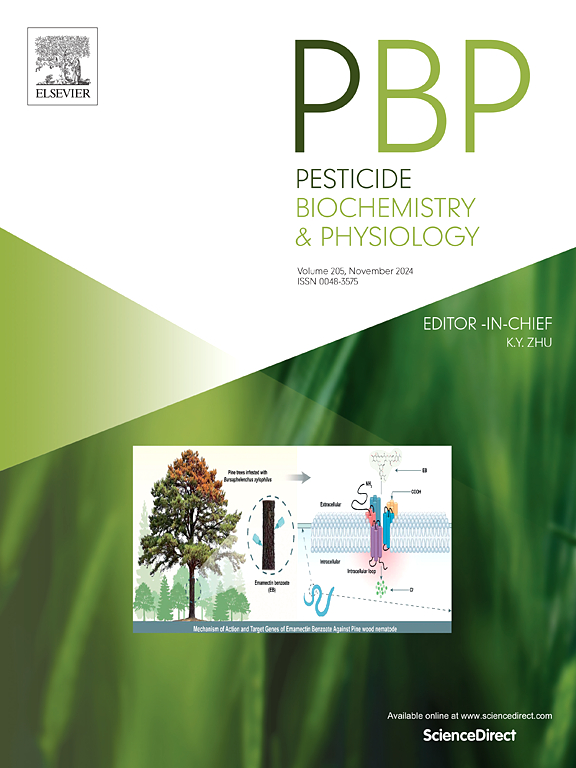A family of nitronate monooxygenase-domain proteins are essential for biocontrol potential of the insect mycopathogen Beauveria bassiana
IF 4.2
1区 农林科学
Q2 BIOCHEMISTRY & MOLECULAR BIOLOGY
引用次数: 0
Abstract
Beauveria bassiana has been assumed a promising biocontrol agent in integrated pest management. Nitronate monooxygenase (NMO) catalyzes the conversion of alkyl nitronates into aldehydes and nitrite as well as nitroalkanes into the corresponding carbonyl compounds and nitrite. In fungi, enzymatic characteristics have been biochemically determined for NMOs; however, the understanding of their biological functions remains largely unknown in entomopathogenic fungi. In this study, a domain annotation analysis revealed that there were eight NMO proteins (BbNmo1–BbNmo8) in the entomopathogenic fungus B. bassiana. The first six NMO proteins contained peroxisomal targeting signal type 1 (PTS1), in which BbNmo2 carried an atypical one. Except for BbNMO1 and BbNMO4, other NMO genes were functionally analyzed. The gene loss of six genes did not cause significant change in fungal vegetative growth, but resulted in convergent defects in fungal resistance to cell-wall integrity stress and conidial hydrophobicity. In addition, BbNmo3 was also required for fungal response to oxidative, osmotic, and nitro-compound stresses as well as extracellular acidification. All these six genes were required for fungal conidiation; however, except for BbNMO3, the other five contributed to blastospore formation. All tested NMO genes were involved in fungal virulence; significantly, BbNMO3 had the greatest contribution. The functionally-characterized NMO proteins were localized to peroxisomes and cytoplasm, which was in accordance with whether they had the PTS1. Current findings indicate that the NMO-domain proteins play essential roles in unique lifestyle in the insect pathogenic fungi.

求助全文
约1分钟内获得全文
求助全文
来源期刊
CiteScore
7.00
自引率
8.50%
发文量
238
审稿时长
4.2 months
期刊介绍:
Pesticide Biochemistry and Physiology publishes original scientific articles pertaining to the mode of action of plant protection agents such as insecticides, fungicides, herbicides, and similar compounds, including nonlethal pest control agents, biosynthesis of pheromones, hormones, and plant resistance agents. Manuscripts may include a biochemical, physiological, or molecular study for an understanding of comparative toxicology or selective toxicity of both target and nontarget organisms. Particular interest will be given to studies on the molecular biology of pest control, toxicology, and pesticide resistance.
Research Areas Emphasized Include the Biochemistry and Physiology of:
• Comparative toxicity
• Mode of action
• Pathophysiology
• Plant growth regulators
• Resistance
• Other effects of pesticides on both parasites and hosts.

 求助内容:
求助内容: 应助结果提醒方式:
应助结果提醒方式:


